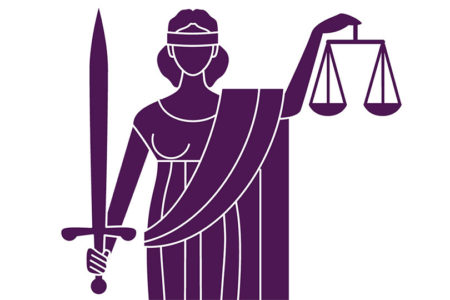When the Time Was Right
How God set the stage on Earth for the birth of His Son.
Galatians 4:4 is a statement that never fails to thrill:
But when the fullness of the time had come, God sent forth His Son, born of a woman, born under the law.
It speaks of God the Father’s timing in transitioning the world from the age of the Mosaic Law to the age of adult sons in the family of God (the apostle Paul’s theological description of the Church Age in Galatians 4).
Yet it also reminds us of the many historical factors that came together perfectly in preparation for Jesus’ entrance onto the world stage.
The Hebrew Scriptures provide inklings of God’s special preparations for His Son. Abraham and his descendants were to live in a specifi c place, the “Promised Land” (Gen. 12:1).
Amazingly, this land lies between the three great continents of Asia, Africa, and Europe. In fact, God calls Jerusalem the “center” of the earth: “Thus says the Lord Gᴏᴅ: ‘This is Jerusalem; I have set her in the midst [center] of the nations [Hebrew, goyim] and the countries all around her’” (Ezek. 5:5).
The nations were arrayed around Israel so the Jewish nation could be a “kingdom of priests” (Ex. 19:6) and represent God to the Gentile world (Dt. 32:8). Almost all of the books of the Bible were authored by Jewish men. In the future, after God removes the true church from the earth through the Rapture, He will re-ignite Israel as His spiritual light (see Revelation 7, 11, and 14).
As the Messiah’s birth (through a Jewish woman) approached, we can imagine God the Father monitoring certain factors for peak ripeness:
(1) Adequate lapse of time for the Jewish people to appreciate the Law of Moses and for humanity to demonstrate its inability to obey that Law.
This was the theological setting. The books of Galatians and Hebrews specifically explain Jesus’ superiority as a High Priest and the New Covenant’s superiority over the Old. However, it would require centuries of laboring under the Law for people to understand these truths. The freedom we enjoy through Christ can only be appreciated in contrast to the Law.
(2) A specific number of people on Earth.
God the Father did not bring His Son into a world that contained a mere handful of humans. He waited until an impressive number could observe Christ’s life, death, and resurrection. An estimated 300 million people inhabited the known world in Christ’s day.
Amazingly, Jewish people constituted about 1 percent (3 million) of that total, with about 50,000 Jewish individuals living in Jerusalem.1 That is a far different ratio from what exists today, with a mere 15 million Jewish people in a world population of 7 billion.
(3) Adequate development of languages capable of explaining legal and abstract principles and the rise of one accepted language of international communication.
We need look no further than the inscription over Christ’s cross to realize the significance of the precise Greek and Latin languages: “Now Pilate wrote a title and put it on the cross. And the writing was: JESUS OF NAZARETH, THE KING OF THE JEWS….And it was written in Hebrew [some translations say Aramaic], Greek, and Latin” (Jn. 19:19–20).
Latin was the legal language of the executing authority. Greek was the international language, used to be sure all could read and heed. Aramaic was the local language to ensure those most likely to rebel would understand the consequences.
Hebrew and Aramaic are picturesque languages. They are ideal for telling stories and moving emotions. However, they lack the precision of Greek and Latin. Three hundred years before Christ was born, God the Father was already priming the rise of Koine (“common”) Greek to international stature.
The sophisticated poets, philosophers, and orators of southern Greece (“Achaia,” with Athens and Sparta) did not respect the people of Macedonia (northern Greece). Macedonians were considered “backward.”
Amazingly, Philip II of Macedon (382–336 B.C.) hired Aristotle to tutor his son Alexander. Aristotle had been trained by Plato and had sat at the feet of Socrates. Alexander became Alexander the Great, who blitzed the world militarily and brought Greek culture and Koine Greek to the Mediterranean basin, Mesopotamia, and India. Three hundred years later, “in the fullness of the time,” Paul used Koine Greek to pen his penetrating defenses of the gospel of Jesus Christ.
(4) A specific degree of sophistication in technology for the speedy spread of information, enhanced by a political situation that allowed for unfettered international travel.
The rise of the Roman Empire accelerated the spread of the gospel. If Jesus had come into a world divided into thousands of closed-off, heavily fortified kingdoms, dissemination of the good news would have been painfully slow. The famous Pax Romana (“Roman Peace”) was not pleasant for those it dominated, but it did provide freedom of movement across political frontiers.
Moreover, Roman industry forged great transportation systems by land and sea that made traveling relatively convenient. If you map Paul’s three major missionary journeys, you will see he traveled more than 5,000 miles in 11 years (AD 47–58). These trips were possible due to well-paved roadways with mile markers, bridges over rough terrain, and Roman soldiers who kept robbers at bay.
In addition, the Roman Empire had postal routes and commercial sea travel, although the New Testament mentions neither. The apostle’s epistles appear to have been delivered by fellow believers.
Perhaps the most impressive element of Roman culture in Christ’s day was that it was at the zenith of its success and power militarily, politically, and culturally. Scholars refer to the first century BC as the “Golden Age” of ancient literature.2
There were three major phases in Roman history:
- Monarchical Period: 753–509 BC. It had seven influential kings.
- Republic Period: 509–31 BC. Powerful, wealthy families instituted Senate Rule.
- Imperial Period: 31 BC–AD 476. AD 312—Under Emperor Constantine, Christianity became a protected religion. AD 476—The Western Empire fell to the Barbarians.
New Testament history falls entirely within the Imperial Period, in the aftermath of the assassination of Julius Caesar. Ironically, though the senators plotted Julius Caesar’s death out of fear of his growing power, his assassination paved the way for the strongest of all the Roman leaders, Caesar Augustus, also known as Octavian. Born Gaius Octavius in 63 BC, Caesar Augustus was the emperor when Christ was born in Bethlehem.
While the murderers of Julius Caesar were sorting things out (including the intrigue involving Cleopatra in Egypt), the Roman politicians were developing another family that would greatly impact Christianity: the Herods. Four generations of Herods are mentioned in the New Testament. Herod the Great’s friendship with Marc Antony and then Caesar Augustus led to the family’s impressive, long-term political leadership in the territories surrounding Jerusalem.
Called Idumeans in Latin, the Herods descended from Jacob’s twin brother, Esau, the father of the Edomites. During the 100 years (164–63 BC) the Jewish Hasmoneans controlled Judea, the Idumeans were forced to convert to Judaism. Therefore, Herod the Great was “king of the Jews” by Roman decree and religious conversion, combined with a close biological connection to the Jewish people through Esau.
His pathological paranoia and fanatical desire to hold on to his power led Herod to order the murder of all males ages two and under (Mt. 2:16) after the wise men from the East arrived in Jerusalem looking for the baby whom they said “has been born King of the Jews” (v. 2).
In describing Christ’s nativity, the Gospel of Luke says, “And it came to pass in those days that a decree went out from Caesar Augustus that all the world should be registered” (Lk. 2:1). Augustus (“reverend”3) was the title the Senate eventually bestowed on Octavian.
He, along with Marc Antony and Lepidus, fought against Brutus and Cassius, the murderers of Julius Caesar (d. March 15, 44 BC). Octavian was Julius Caesar’s grandnephew and had already been named his successor via adoption. Only 18 at the time, Octavian shrewdly rose to dominance, promoted by the famous orator Cicero,4 and influenced Rome successfully for the next 57 years, 40 of them as emperor.
Beyond question, Caesar Augustus was the greatest Roman leader of all the ages. His brilliant political skills enabled him to accomplish the following:
- Create the Roman Empire from the ashes of the Roman Republic.
- Judiciously use false humility to make the Senate think the republic still operated, while actually commanding more control of the empire than any leader to date.
- Close the doors of the Temple of Janus, the two-faced god of war, thus indicating “peace throughout the empire.”
- Promote laws to encourage marriage and families for the sake of raising a stable next generation of Roman citizens.
- Shrewdly reward faithful officers and soldiers.
- Shrewdly arrange marriages so that the longer he lived, the more young, influential noblemen were his own relatives.
- At great expense (upwards of 50 percent of the Roman annual budget), maintain an army of about 250,000 men who were idle a good percentage of the time.5 The census in Luke 2 would have been for taxation purposes toward this expense.
- Carry out extensive construction projects of both sacred and secular buildings.
- Institute a 1 percent sales tax and 5 percent inheritance tax.6
In addition to these feats, Caesar Augustus was proclaimed Pontifex Maximus, head of the official Roman State Religion, in 12 BC.7 Upon his death in AD 14, he was deified.8 The Senate renamed the month of August in his honor.
It was in such a time as this, when conditions were completely right, that “God sent forth His Son, born of a woman, born under the law, to redeem those who were under the law, that we might receive the adoption as sons” (Gal. 4:4–5).
ENDNOTES
- Joseph Jacobs, “Statistics,” The Jewish Encyclopedia, 1906 ed. <jewishencyclopedia.com/articles/13992-statistics>. Ancient statistics are considered highly unreliable, although these numbers are conservative estimates.
- Kevin M. McGeough, The Romans: An Introduction (Oxford: Oxford University Press, 2004), 266.
- Lesley Adkins and Roy A. Adkins, Handbook to Life in Ancient Rome (New York, NY: Oxford University Press, 1998), 20.
- McGeough, 77.
- Martin Goodman, The Roman World: 44 BC–AD 180 (New York, NY: Routledge, 1997), 82.
- Edward T. Salmon, A History of the Roman World From 30 B.C. to A.D. 138 (London: Methuen & Co., 1968), 31.
- Goodman, 91.
- J. M. Roberts, History of the World (New York: Oxford University Press, 1993), 195.







